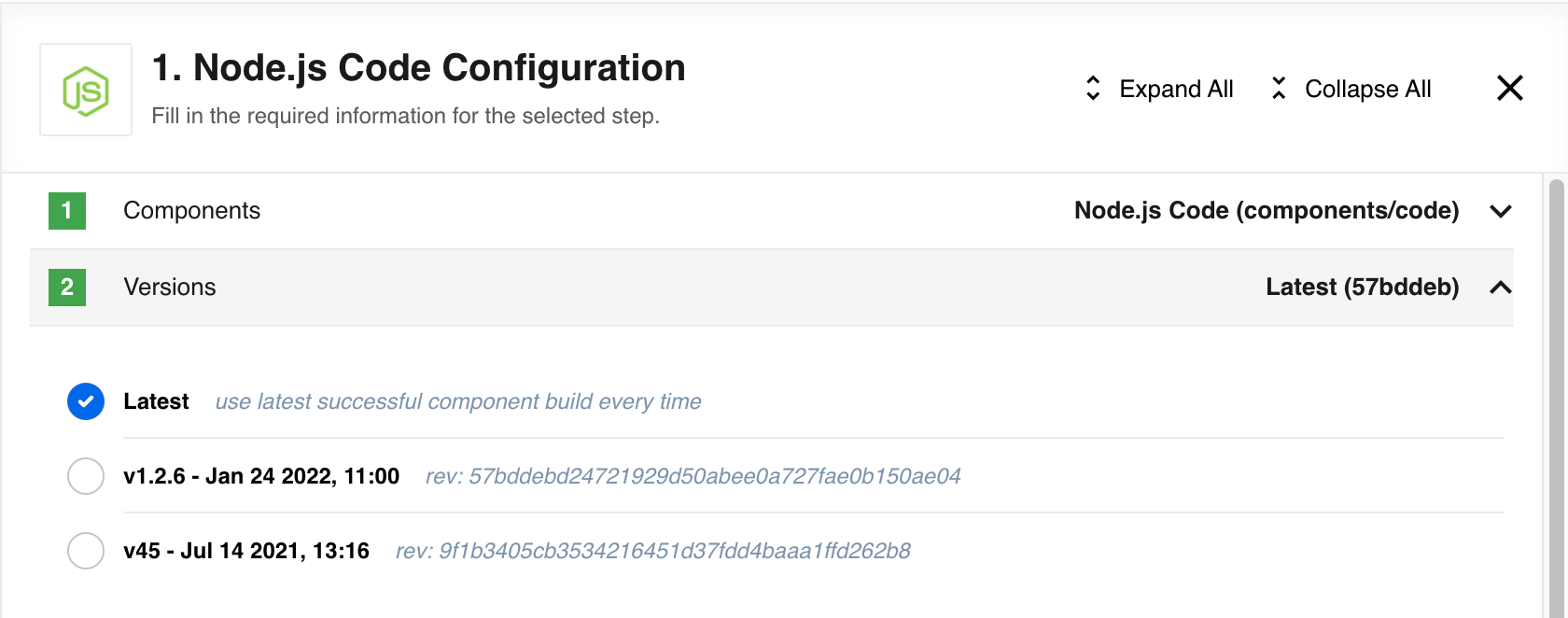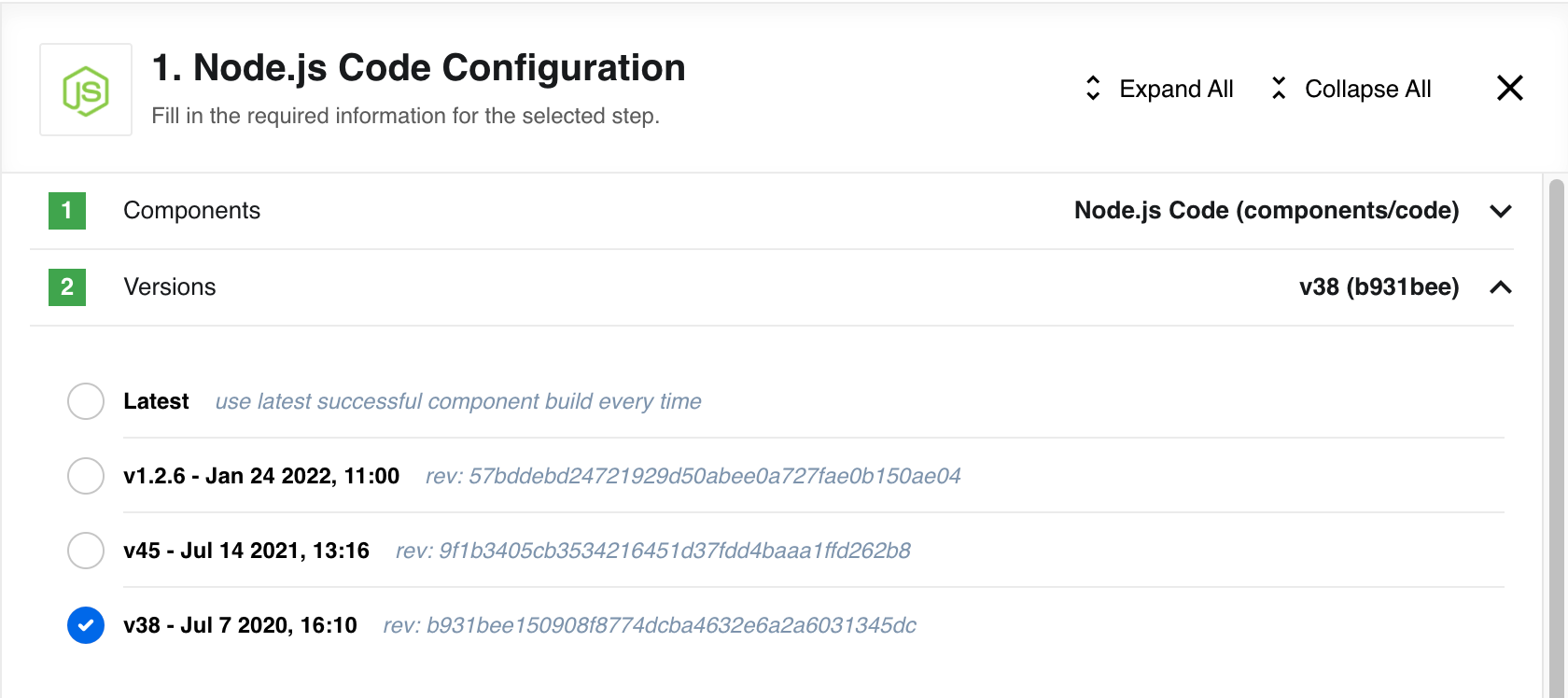Component version
Build History
During the component development, every new deployment or code commit is given a distinct version which every developer can examine in the Build history table presented on each repository page.
The screenshot shows table of deployments when you navigate to component repository page from the Development > Developer Teams > Team > Repository. The columns in this table has the following information for each deployment:
- Date - the date when the component code was deployed to the platform.
- Version - the version of component. Previously sequential number assigned after each deployment. Now the actual semantic version of each deployment (from 21.19) taken from the
versionparameter of thecomponent.jsonconfiguration. The platform will reject an attempt to deploy a component code with the same version twice. - Commit - the short-hash of the component code version.
- Status - the deployment status. The check-mark means a success.
- State - showing the Current version - the
latestversion. - Log - Shows the component deployment log. At any given time we show the recent build log.
- Bin Icon - Click to delete the version from system. Shown to contract Admins and above. System will not allow you to delete a version when it’s used in an integration flow step.
Step configuration
When you select a component for each integration step, the platform will automatically select the latest available version of component for your step and skip over the configuration. You can open the Versions section again:
When you save the integration flow step, the platform will fix component version shown in this configuration section. This approach ensures that the integration flow step behaves the same way when you tested during the design.
If you would rather prefer the platform to use the latest component version each
time then select the Latest label as shown in the screenshot.
Please note, we ensure the backwards compatibility of every component release. However, some changes might break your integration setup or produce unwanted results if you set the component version
latest. We recommend using the latest current version instead.
Available versions
Starting from the platform release 21.41, we limit the component versions available to select during the integration flow step design to two (2). This means you can select latest 2 deployments.
If you have an integration flow where you use earlier version you would still see the version during the step configuration.
When you change the version to newest one, the old version will no longer show.
We recommend using newer version of components when possible to ensure the message processing stability. We fix and improve our components so they can serve you well.



